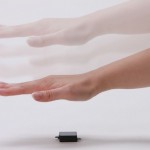The Impact of Fujitsu’s Slimmer and Faster Palm Vein Sensor on the Biometrics Industry
 In case you missed it, last week Fujitsu Frontech released a smaller, slimmer and faster vascular palm vein reader that promises to be small enough to add biometric recognition user authentication in laptop computers and other electronic components. This is a significant announcement for the evolution of vascular palm vein sensor technology proving that Fujitsu continues to innovate in the field and encourage the widespread adoption of this technology throughout the industry.
In case you missed it, last week Fujitsu Frontech released a smaller, slimmer and faster vascular palm vein reader that promises to be small enough to add biometric recognition user authentication in laptop computers and other electronic components. This is a significant announcement for the evolution of vascular palm vein sensor technology proving that Fujitsu continues to innovate in the field and encourage the widespread adoption of this technology throughout the industry.
If you recall, vascular biometric technology does not rely on fingerprints for identification purposes, so the integrity of the skin is not an issue. Instead, vascular biometrics uses a near infrared light to map and capture vein patterns beneath the skin and then uses that image as the basis for individual identification. In most cases, fingerprint technology works well but has proved to not be a “one size fits all” biometric modality especially in cases where end users may have cuts, scrapes, scars and bruises or fall under a certain age or ethnic demographic.
With the release of the new, slimmer palm vein sensor Fujitsu has opened the door for laptop, notebook and electronic device manufacturers to adopt a vascular authentication modality for their components essentially providing what is arguably one of the most reliable and accurate biometric technologies to a wider array of products. Fujitsu also stated that the new palm vein sensor technology has significant improvements in speed and functionality over previous sensors. This is significant news and will most likely continue to catapult the rapid growth of palm vein vascular biometrics into the higher echelon of biometric modalities.
We have already discussed how palm vein and vascular biometrics has impacted healthcare and membership management and why its important to consider this technology if you are searching for a biometric identification system for your business. Now that Fujitsu has released the new palm vein sensor technology, we hope to soon be writing about how this technology has helped to increase security on laptops and electronic devices and the continued proliferation of vascular biometric identification within many vertical markets.
What are your thoughts on Fujitsu’s new, slimmer and faster palm vein sensor?
Related articles
- Fujitsu Develops World’s Smallest And Thinnest Palm Vein Sensor (crunchgear.com)











